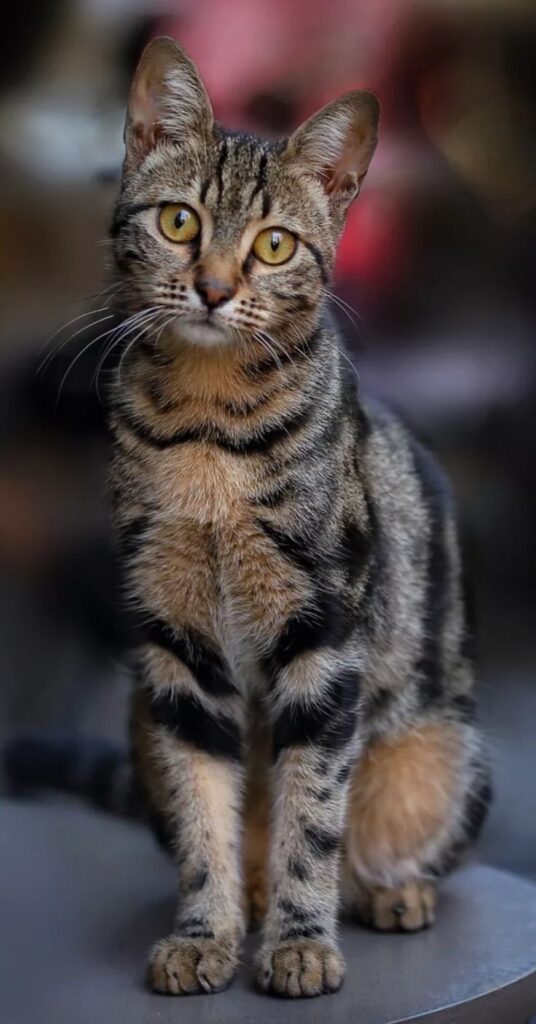Advanced Cat Care guide : As a seasoned cat owner, you’re already familiar with the basics of feline care. However, there’s always more to learn and implement to ensure your cat leads a healthy, enriched, and fulfilling life. This guide delves into advanced strategies and expert tips that go beyond the fundamentals, aiming to elevate your cat care routine to the next level.

1. Understanding Feline Behavior and Communication
Decoding Body Language
Cats communicate extensively through body language. Recognizing subtle cues can help you understand their needs and emotions:
- Tail Position: A raised tail often indicates a happy cat, while a tucked tail may signify fear or submission.
- Ear Orientation: Forward-facing ears suggest interest, whereas flattened ears can indicate aggression or discomfort.
- Pupil Dilation: Dilated pupils may signal excitement or fear.
Vocalizations and Their Meanings
Cats use various sounds to communicate:
- Meowing: Often directed at humans, meows can express hunger, greeting, or a call for attention.
- Purring: Typically a sign of contentment, but can also occur when a cat is in pain or anxious.
- Hissing and Growling: Indicators of fear, aggression, or discomfort.
2. Nutrition: Tailoring Diets for Optimal Health
Life Stage-Specific Nutrition
Cats’ nutritional needs evolve with age:
- Kittens: Require high-protein, high-calorie diets to support growth.
- Adults: Need balanced diets to maintain weight and health.
- Seniors: May benefit from diets with joint support and easily digestible proteins.
Special Dietary Considerations
Some cats have specific dietary requirements:
- Allergies: Hypoallergenic diets can alleviate symptoms.
- Chronic Conditions: Conditions like kidney disease or diabetes necessitate specialized diets.
Consult your veterinarian to tailor a diet plan suited to your cat’s individual needs.
3. Enrichment: Stimulating Mind and Body
Interactive Play
Engage your cat with toys that mimic prey behavior, such as feather wands or laser pointers. Regular play sessions prevent boredom and promote physical health.
Environmental Enhancements
- Vertical Spaces: Install cat trees or shelves to satisfy climbing instincts.
- Window Perches: Provide views of the outdoors to stimulate curiosity.
- Puzzle Feeders: Encourage mental stimulation during mealtime.
4. Health Monitoring and Preventive Care
Regular Veterinary Check-Ups
Schedule annual or bi-annual vet visits to monitor health and catch potential issues early.
Dental Care
Implement a dental hygiene routine:
- Brushing: Use cat-specific toothbrushes and toothpaste.
- Dental Treats: Provide treats designed to reduce plaque buildup.
Weight Management
Monitor your cat’s weight to prevent obesity-related health issues. Adjust diet and activity levels as necessary.
5. Grooming: Maintaining a Healthy Coat
Brushing Techniques
Regular brushing removes loose fur and prevents matting:
- Short-Haired Cats: Brush once a week.
- Long-Haired Cats: Brush daily to prevent tangles.
Bathing and Nail Trimming
While cats groom themselves, occasional baths may be necessary. Trim nails every few weeks to prevent overgrowth and associated issues.
6. Behavioral Training and Socialization
Positive Reinforcement
Use treats and praise to encourage desired behaviors, such as using scratching posts or responding to commands.
Addressing Behavioral Issues
Identify and address issues like aggression or inappropriate elimination promptly. Consult a veterinarian or feline behaviorist for guidance.
7. Creating a Safe and Comfortable Environment
Safe Spaces
Provide quiet areas where your cat can retreat and relax undisturbed.
Hazard Prevention
Ensure your home is free from toxic plants, open windows without screens, and accessible small objects that could be ingested.
8. Multi-Cat Household Dynamics
Resource Allocation
Provide multiple resources (litter boxes, food bowls, resting areas) to prevent competition and stress.
Monitoring Interactions
Observe cats for signs of tension or aggression and intervene as necessary to maintain harmony.
9. Travel and Transportation Tips
Carrier Training
Acclimate your cat to a carrier well before travel. Place familiar bedding and toys inside to create a sense of security.
Travel Essentials
Bring necessary items such as food, water, litter, and medical records when traveling with your cat.
10. End-of-Life Care and Planning
Recognizing Signs of Aging
Monitor for changes in behavior, appetite, or mobility that may indicate health issues.
Palliative Care
Work with your veterinarian to manage chronic conditions and ensure comfort during your cat’s senior years.
